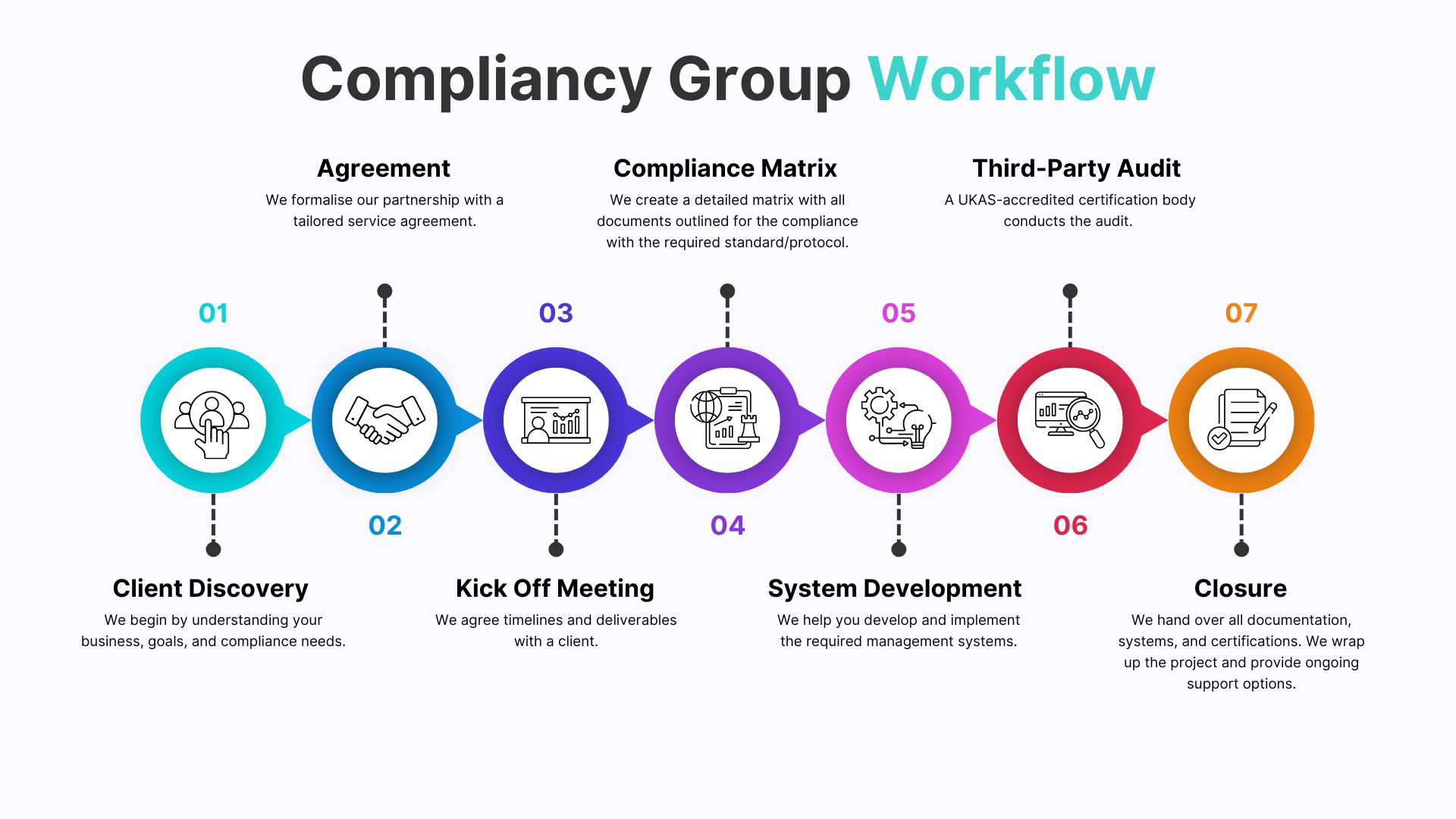We're Here To
Help
A Site Safety Audit is a comprehensive inspection designed to assess all aspects of health and safety on your worksite, ensuring compliance with legal requirements and industry best practices. Completing a site safety audit demonstrates your business’s commitment to protecting workers, reducing risks, and maintaining a safe working environment – trusted by clients, partners, and regulators across construction, industrial, and commercial sectors. With robust site safety management, you minimise the risk of accidents, avoid costly disruptions, and build a reputation for responsibility and excellence. Compliancy Group guides you through every step – making site safety compliance clear, practical, and a genuine business advantage.
We understand the complexities of site safety regulations and practical risk management. Our team brings hands-on experience with site safety audits, hazard identification, and sector-specific safety requirements.
No one-size-fits-all here. Whether you need an initial audit, ongoing monitoring, action plan development, or compliance advice, our services are fully customised to your operations. We offer flexible support packages—from essential guidance to comprehensive on-site consultancy.
We work exclusively with UKAS-accredited certification bodies and maintain a 100% pass rate for compliance assessments. Our clients trust us to deliver results that stand up to audit and regulatory scrutiny—helping you achieve, maintain, and leverage site safety compliance for business growth.
Compliance shouldn’t slow you down. We help you build safer worksites, reduce risk, and improve operational efficiency—so you can focus on your core business.
You’ll work directly with our expert team, including leadership involvement from our CEO. We pride ourselves on responsive communication, clear guidance, and ongoing support throughout your compliance journey.
Demonstrate compliance to secure contracts and reassure clients or insurers.
Show your commitment to site safety, legal responsibilities, and industry standards.
Minimise the risk of workplace accidents, injuries, and costly liabilities.
Enhance your standing as a responsible and trusted organisation.
Regular audits and compliance checks foster a culture of ongoing safety and operational excellence.
From initial audit to ongoing support, our team ensures you’re always prepared and confident.
We streamline compliance processes, freeing up your team to focus on core business activities.
Services are tailored to your specific business needs, not generic templates.
Ongoing support, training, and regulatory updates keep your business compliant long after inspection.
Our 100% compliance pass rate and exclusive partnerships with UKAS-accredited bodies mean you’re in safe hands.

Safety audits can be categorized into three main types: compliance audits, program audits, and management system audits.
At a high level, inspections are a “do” and audits are a “check”. An inspection is typically something that a site is required to do by a compliance obligation. An audit is the process of checking that compliance obligations have been met, including that the required inspections have been done.
HSE Audit (Health, Safety and Environmental Audit) is a systematic examination of Environmental, Health and Safety Performance and the systems put in place for prevention of accidents & incidents, adverse health effects & environmental impacts.
A safety audit is a process that evaluates the health and safety of a work setting. During an audit, a group gathers data about a location's operations. They identify hazards and illustrate how to make the area safer for employees. Organizational leaders use audits to develop safety procedures for their team members.
The Stage 4 Road Safety Audit report should identify any road safety problems indicated by the data analysis and observations during any site visits undertaken. The reports should make recommendations for remedial action.
Here's the biggest difference between these two safety processes: Safety inspections look for risky behaviors and hazards that might lead to accidents. Safety audits look at programs and processes to ensure they meet a company's safety goals
EHS officer of contractor shall conduct safety audit daily and document it. Immediate actions shall be taken for the findings. Every day before start of work, EHS officer shall ensure that findings of previous day are closed.
How Often Should Safety Audits Happen? Generally speaking, an organization should conduct a safety audit at least once per year. However, some organizations—particularly larger organizations—perform safety audits more often (e.g. every 6 or 3 months) to minimize their risks.
While the law doesn't require a workplace health and safety audit, they are great tools that identify what's been doing well and what areas need improvement. Health and safety audits should always be carried out by a qualified expert, whether internal or external.